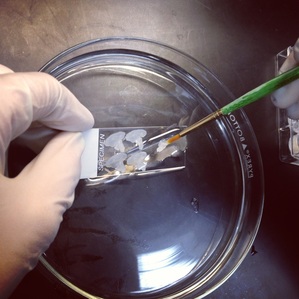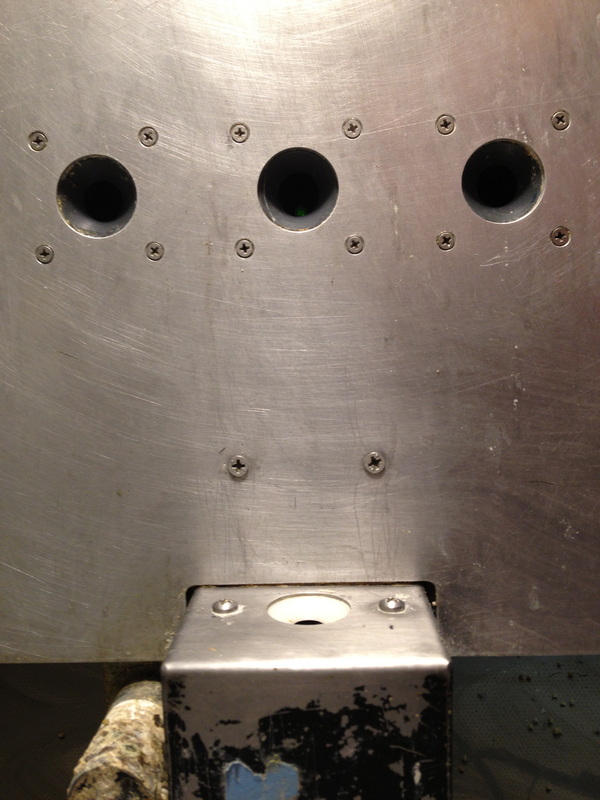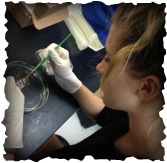
We're studying the phenomena of perceptual anchors - modeling our questions with birds and applying our answers to humans...
In the most simple terms - this is our project; to create an experiment that can apply the Cocktail Party Problem to birds in two different contexts. But first! What is the cocktail party problem? (In my understanding, the best way to explain it is by example and I'll try to be a little creative with mine....)
Have you ever been driving in a car with the windows down, music blasting, and the person you're driving with suddenly wants to spark a conversation? You don't want to lost the wind in your hair, nor miss your favorite part of the song, but you still want to try and engage in conversation with this person, right? When you're trying to listen, pick out and determine what the person is saying, your brain is doing the same thing - trying to detect, recognize and discriminate what that person is saying from the music and the wind. - This is the basis of the cocktail party problem: having to separate all the 'noise' around you from the sound (or in this case the voice) that you actually care about. The name "Cocktail Party Problem" comes from being as a busy party, where there's voices, music, and various other background noise preventing you from clearly hearing the single individual you're conversing with.
What we've learned from Dr Dan Meliza's paper, "Effects of auditory recognition learning on the perception of vocal features in European starlings," is that european starlings definitely benefit from having experience with an anchor stimulus, when they have to discriminate between multiple tones or motifs... Therefore, Krista and I are going off the work of that study to ask about the variability of that anchor stimulus when it and a target stimulus (second stimulus played, which the birds must classify as 'same' or 'different' from the anchor) are embedded in noise....
Why is this research relevant to humans? You might ask Dr Merav Ahissar, who wrote a paper on the audio anchoring ability of human beings with dyslexia, called "Dyslexia and the anchoring-deficit hypothesis." Dr Ahissar's paper provides data that dyslexic individuals lack the benefit that having an anchoring audio experience provides. There is a distinct connection between the 'anchoring-deficit hypothesis' and the ability of birds to benefit from anchor experience when their audio stimuli is embedded in noise.
Here's where Krista and I are at in our experiment:
In the most simple terms - this is our project; to create an experiment that can apply the Cocktail Party Problem to birds in two different contexts. But first! What is the cocktail party problem? (In my understanding, the best way to explain it is by example and I'll try to be a little creative with mine....)
Have you ever been driving in a car with the windows down, music blasting, and the person you're driving with suddenly wants to spark a conversation? You don't want to lost the wind in your hair, nor miss your favorite part of the song, but you still want to try and engage in conversation with this person, right? When you're trying to listen, pick out and determine what the person is saying, your brain is doing the same thing - trying to detect, recognize and discriminate what that person is saying from the music and the wind. - This is the basis of the cocktail party problem: having to separate all the 'noise' around you from the sound (or in this case the voice) that you actually care about. The name "Cocktail Party Problem" comes from being as a busy party, where there's voices, music, and various other background noise preventing you from clearly hearing the single individual you're conversing with.
What we've learned from Dr Dan Meliza's paper, "Effects of auditory recognition learning on the perception of vocal features in European starlings," is that european starlings definitely benefit from having experience with an anchor stimulus, when they have to discriminate between multiple tones or motifs... Therefore, Krista and I are going off the work of that study to ask about the variability of that anchor stimulus when it and a target stimulus (second stimulus played, which the birds must classify as 'same' or 'different' from the anchor) are embedded in noise....
Why is this research relevant to humans? You might ask Dr Merav Ahissar, who wrote a paper on the audio anchoring ability of human beings with dyslexia, called "Dyslexia and the anchoring-deficit hypothesis." Dr Ahissar's paper provides data that dyslexic individuals lack the benefit that having an anchoring audio experience provides. There is a distinct connection between the 'anchoring-deficit hypothesis' and the ability of birds to benefit from anchor experience when their audio stimuli is embedded in noise.
Here's where Krista and I are at in our experiment:
- Four Blocks of Shaping - In order to train them to adapt to the hopper system and respond to both visual and auditory stimuli given to them.
- Same vs Different Trials - These were the first set of discrimination trials we gave to the birds, requiring three steps: a) peck center port to initiate a trial, b) peck center port to acknowledge participation in trial once the anchor stimulus has played and to begin play of target stimulus, and c) peck center if target is the same as the anchor / peck left is the target is different from the anchor... This process was not effective for the first round; we found that the birds only repeatedly pecked the center with no regard for their punishment when the target was different from the anchor (meaning that they should have pecked left).
- Different-Only Trials - After the birds were unsuccessful in round one their same/different task, we decided we had two options, to either: increase the length of their 'time-out' punishment time, or put the birds on different-only trials. We chose the latter. The birds all ended this round of the trial successfully, though at different levels.
- Increased Anchor Play (via Variable Ratio) - In order to give the birds more of a challenge, we attempted to give them a change in the number of times that their anchor stimulus would play. This was unsuccessful however, because the birds were relying on the pattern of the task rather than the stimuli in order to respond.
- Visual and Auditory Stimuli - Now we have the birds on a trial in which they are provided with visual stimuli queuing them in the port which they need to peck. The idea of this intermediate terminal procedure is to get them relying on the stimuli when they respond in a trial. Over time, we'll wean the birds off of the visual lights in the port they need to peck, once we're assured that they understand the trial stimuli-response protocol.


 RSS Feed
RSS Feed